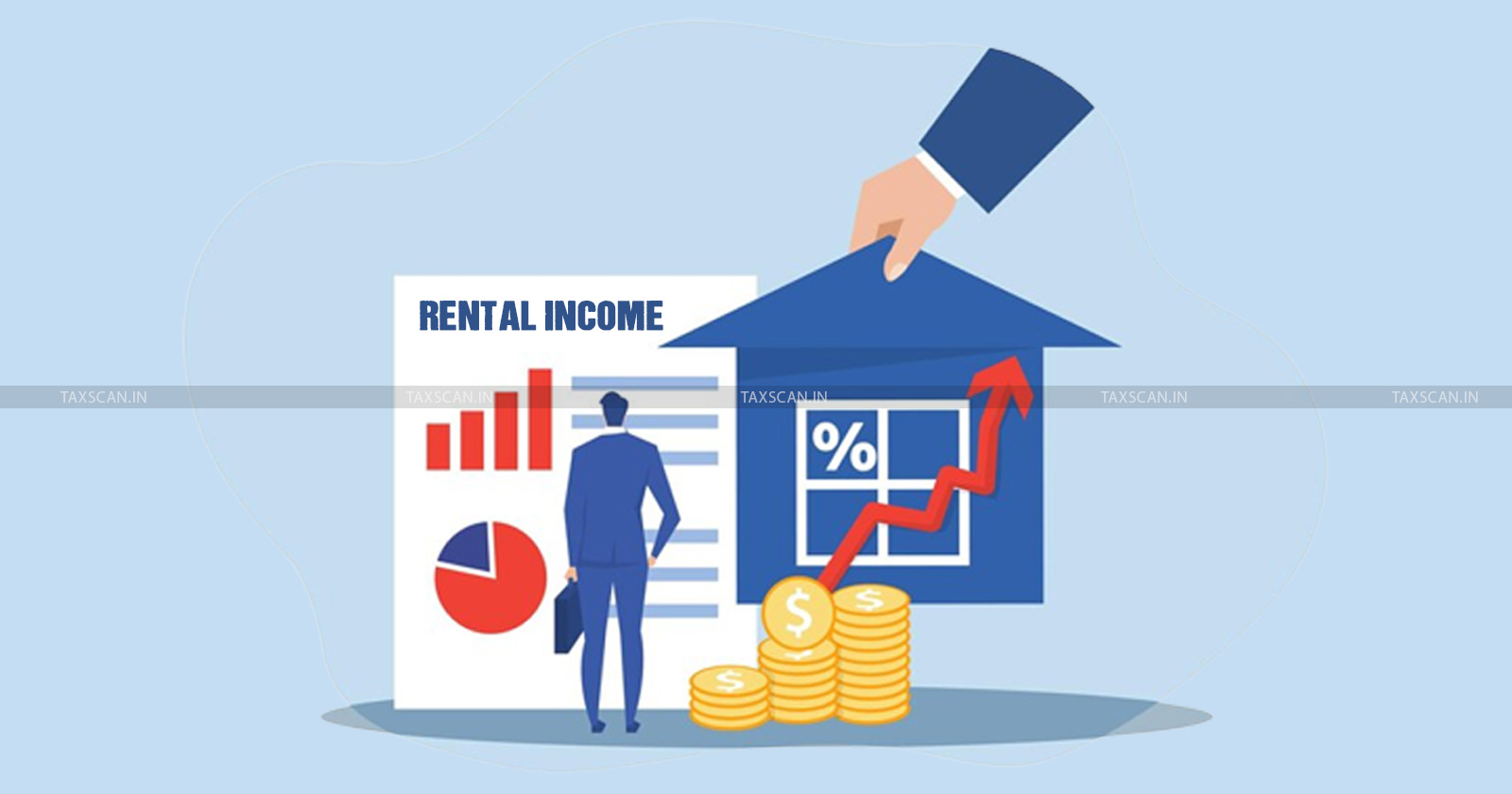Split Smart, Save Big: Tax-Efficient Rental Income Planning for Couples
From April 1, 2025, the new income tax regime has become even more attractive. If you have no other income, you can earn rental income up to Rs. 10 lakh and still pay zero tax, thanks to revised slab limits and a Rs. 3 lakh exemption threshold for individuals

As rental incomes rise across India’s booming property market, many couples are discovering that owning a second home can be more than just a long-term investment—it can also be a steady source of monthly income. But with income comes taxes, and not all landlords know how to legally reduce their tax burden.
If you and your spouse (or partner) co-own a property, the Income Tax Act gives you a golden opportunity to cut down your tax liability—if you split your rental income the right way. Let’s break down how rental income is taxed, what rules apply to co-ownership, and how couples can plan smartly to save big.
Step by Step Handbook for Filing GST Appeals, Click Here
Joint Ownership = Joint Tax Saving
When a house is jointly owned and rented out, the income doesn’t have to be taxed in the hands of just one person. Section 26 of the Income Tax Act says that if two or more people own a property—outside the scope of any business—then the rental income should be taxed in proportion to their ownership share.
This means that if both husband and wife own a house equally, and it’s not part of any business, the rental income should be split 50:50 for tax purposes—even if the rent is being paid to just one of them or the rent agreement is signed by only one name.
Step by Step Guide of Preparing Company Balance Sheet and Profit & Loss Account Click Here
It also doesn’t matter if TDS (Tax Deducted at Source) on the rent is credited to one spouse’s PAN. When filing returns, that person can declare their half of the income and assign the rest to the co-owner. Both can then report their respective shares and claim their portion of the TDS. Simple, legal, and effective.
Meet Ramanujan and Jyothi (Fictional)
Let’s say Ramanujan and Jyothi, a couple based in Chennai, jointly own a 2BHK flat that they rent out for Rs. 40,000 per month. Their sale deed clearly states that they own the property in equal proportion.
Now, although the rent gets deposited in Ramanujan’s bank account, and the tenant deducts TDS under his name, the law still requires both Ramanujan and Jyothi to show Rs. 20,000 each as rental income in their tax returns.
Over a year, their gross rental income adds up to Rs. 4.8 lakh. Each co-owner reports Rs. 2.4 lakh. They both claim the standard 30% deduction allowed under Section 24(a), which comes to Rs. 72,000 each. That brings their taxable income down to just Rs. 1.68 lakh each—well below the exemption limit under both the old and new tax regimes. So they end up paying no tax on their rental income at all.
This strategy works especially well when one partner falls into a lower tax bracket than the other.
What If You’re Not Married?
A common question: Do you have to be married to get this benefit?
The short answer is no.
Section 26 talks about co-owners—it doesn’t mention spouses. So if an unmarried couple or even siblings or friends jointly own a property and the ownership is legally recorded, the rental income can be split between them based on their share. The key is proper documentation—make sure the ownership ratio is clearly stated in the sale deed.
How Rental Income Is Taxed
Rental income falls under the head “Income from House Property” in your tax return. Here's how it works:
- Gross Annual Value (GAV): This is the total rent you receive in a year.
- Less: Municipal Taxes: Only if they’re paid by the owner.
- Net Annual Value (NAV): GAV minus municipal taxes.
- Less: 30% Standard Deduction: Automatically allowed, no bills required.
- Less: Interest on Home Loan (Section 24b): Up to Rs. 2 lakh for self-occupied, unlimited for rented property.
- Result: Taxable income from house property.
So, if Ramanujan and Jyothi don’t pay any municipal taxes, their NAV remains Rs. 4.8 lakh. After the 30% standard deduction (Rs. 1.44 lakh), their net rental income is Rs. 3.36 lakh. Split equally, that’s Rs. 1.68 lakh each—again, below the exemption threshold. That’s how you save smart.
Planning Around the New Tax Regime
From April 1, 2025, the new income tax regime has become even more attractive. If you have no other income, you can earn rental income up to Rs. 10 lakh and still pay zero tax, thanks to revised slab limits and a Rs. 3 lakh exemption threshold for individuals.
However, the new regime does away with most deductions, except the 30% standard deduction on house property income and a few others.
So how do you decide?
- If you have only rental income, the new regime might work better.
- If you also have salary or business income and want to claim deductions under Sections 80C (LIC, PPF), 80D (health insurance), etc., then the old regime may be more beneficial.
In our example, Jyothi doesn’t have any other income, so the new regime suits her. Ramanujan has a full-time job with salary and investments, so the old regime helps him save more.
Other Smart Tax-Saving Tips
1. Separate Maintenance Charges:
If your lease agreement includes Rs. 45,000 per month, and Rs. 5,000 is maintenance charges, mention this clearly in the rent agreement. You’ll be taxed only on Rs. 40,000.
2. Separate Charges for Furnishings:
If you’re renting out a furnished home, consider charging separately for furniture and white goods. This part can be treated as “Income from Other Sources,” and you may be able to claim depreciation.
3. Claim Full Home Loan Interest:
There’s no upper limit on the interest deduction for a rented property. If Ramanujan is paying Rs. 2.5 lakh as annual interest on the home loan, he can claim the entire amount under Section 24(b).
4. Municipal Taxes Are Deductible:
Any property tax or water tax paid to the local authority can be deducted from the gross rental income. Keep receipts handy.
5. Consider Ownership with Senior Citizens:
If a parent or senior citizen co-owns the property and has no other income, their share of the rental income up to Rs. 3 lakh is tax-free under the old regime.
6. Use an HUF or LLP (for High-Value Properties):
If your rental income is high, consider transferring property ownership to a Hindu Undivided Family (HUF) or Limited Liability Partnership (LLP) to spread the tax burden across more entities.
What About GST on Rental Income?
Here’s the rule:
- Residential use? No GST, no matter how much rent you earn.
- Commercial use? GST applies if your total rental income crosses Rs. 20 lakh per year.
So if Ramanujan and Jyothi lease their flat to a family for residential use, there’s no GST. But if they rent it to a consulting firm and their combined rent exceeds Rs. 20 lakh annually, 18% GST applies.
Final Thoughts
Joint ownership of property isn’t just about asset building—it’s also a smart tax-saving tool. With the right paperwork and planning, couples can reduce their rental income tax legally and significantly.
Ramanujan and Jyothi’s case is a perfect example of how co-ownership, proportionate reporting, and choosing the right tax regime can lead to zero tax on rental income. The key lies in clear agreements, consistent reporting, and keeping your tax documents in order.
With rents rising and tax laws evolving, it’s more important than ever to review your rental income strategy each year. Done right, it could mean lakhs in your pocket—and peace of mind with the tax department.
Support our journalism by subscribing to Taxscan premium. Follow us on Telegram for quick updates


